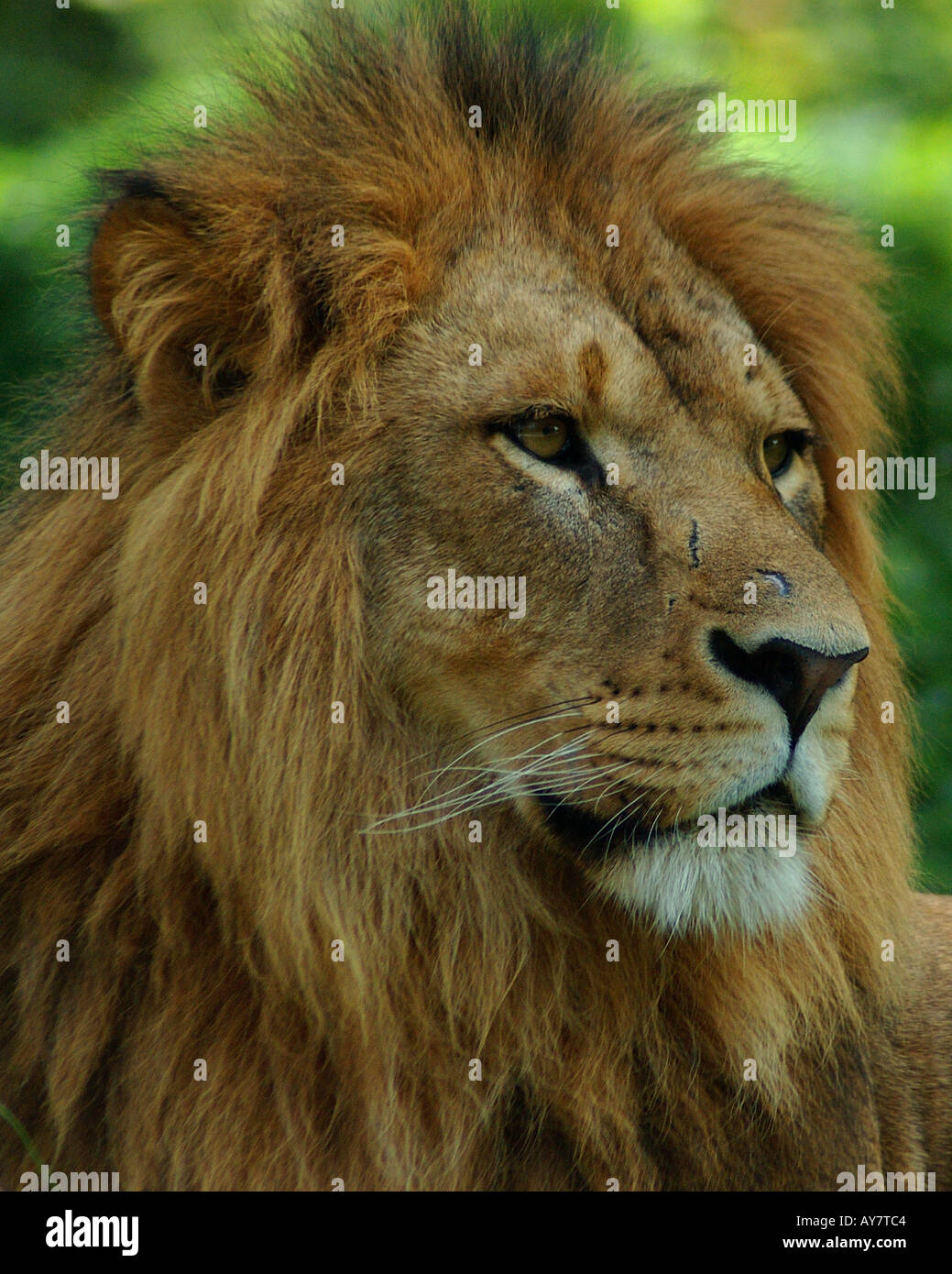A Regal Lion

Image details
Contributor:
haydn baker / Alamy Stock PhotoImage ID:
AY7TC4File size:
52.7 MB (2.3 MB Compressed download)Releases:
Model - no | Property - noDo I need a release?Dimensions:
3839 x 4800 px | 32.5 x 40.6 cm | 12.8 x 16 inches | 300dpiDate taken:
2 June 2005More information:
The Lion (Panthera leo) is a mammal of the family Felidae. It is the largest and most powerful living felid with the exception of the tiger. The male lion, easily recognized by his mane, may weigh up to 250 kg (550 lb) Females are much smaller, weighing up to 90 kg (300 lb). In the wild lions live for around 10–14 years, while in captivity they can live over 20. Lions are predatory carnivores who live in family groups, called prides. The family consists of related females, their cubs of both sexes, and one or more unrelated males who mate with the adult females. Although it was once thought that females did most of the hunting in the pride, it is now known that males contribute much more to hunting than the amount for which they had been previously given credit. Both males and females will defend the pride against outside intruders. Typically, males will not tolerate outside males, and females will not tolerate outside females. Males are expelled from the pride or leave on their own when they reach maturity. When or if a male coalition takes over a pride and ousts the previous coalition, the conquerors often kill any cubs even if they did father them. The last remnant of the Asiatic Lion (subspecies Panthera leo persica), which in historical times ranged from Greece to India through Persia, lives in the Gir Forest of northwestern India. About 300 lions live in a 1412 km² (558 square miles) sanctuary in the state of Gujarat. Lions had become extinct in Greece, their last European outpost, by 100 CE, but they survived in considerable numbers in the Middle East and North Africa until the early 20th century. The lions that used to live in North Africa, called Barbary lions, tended to be larger than the sub-Saharan ones, and the males had more extensive manes. They are thought to have been a subspecies of lion (Panthera leo leo), although this has not been confirmed. Other extinct subspecies are the Cape Lion, the European Cave Lion (subspecies Panthera leo spelaea) wh